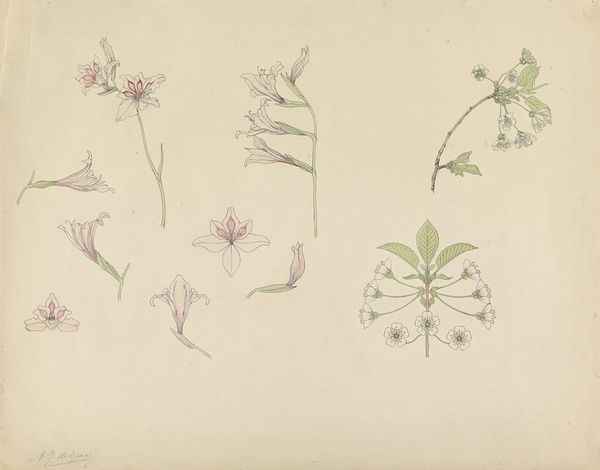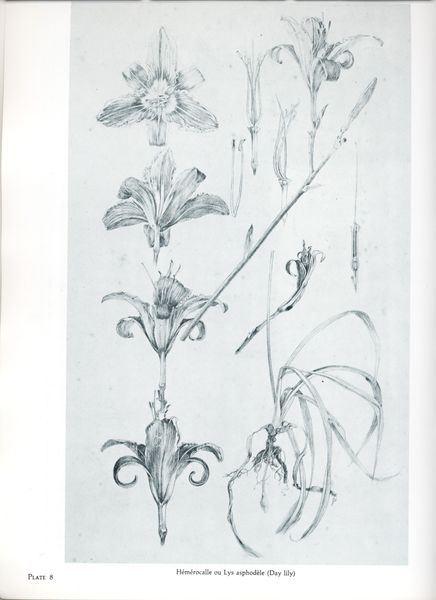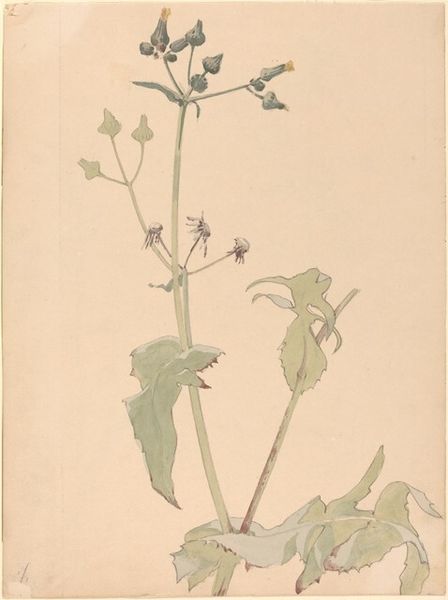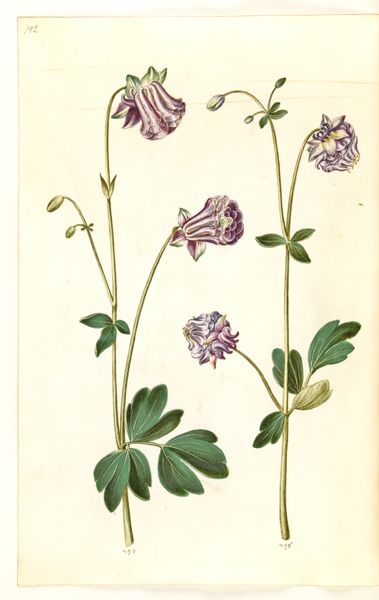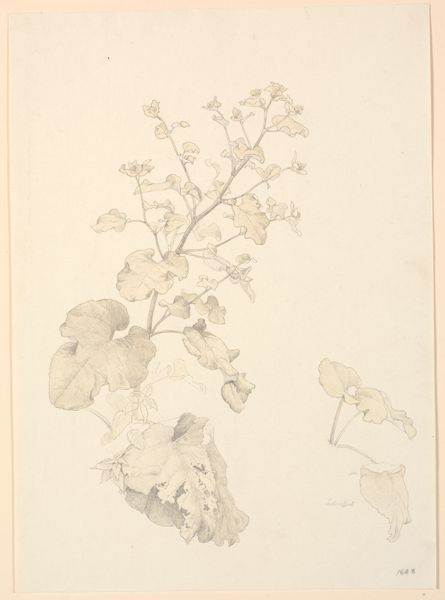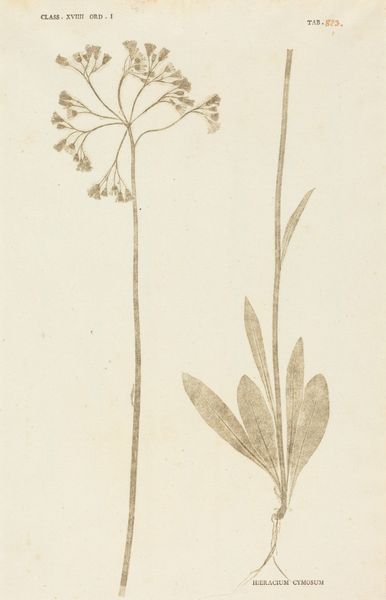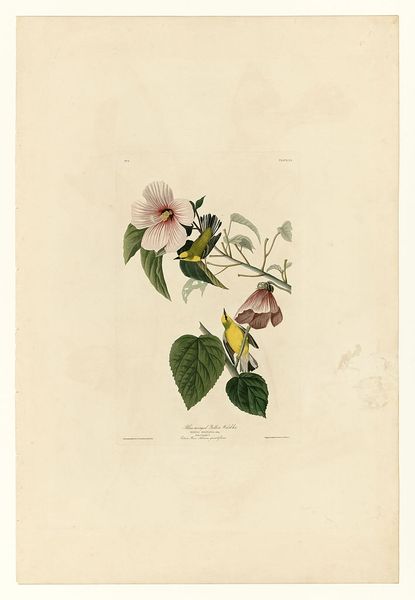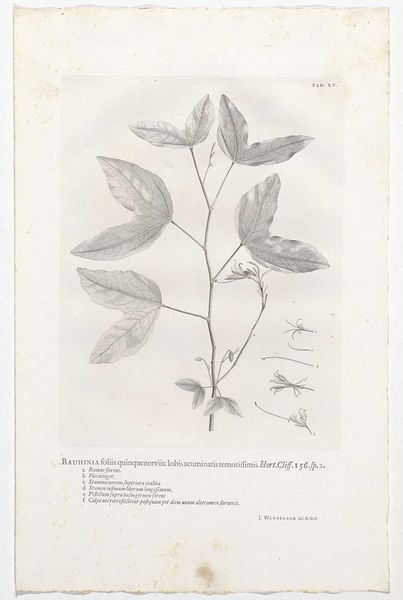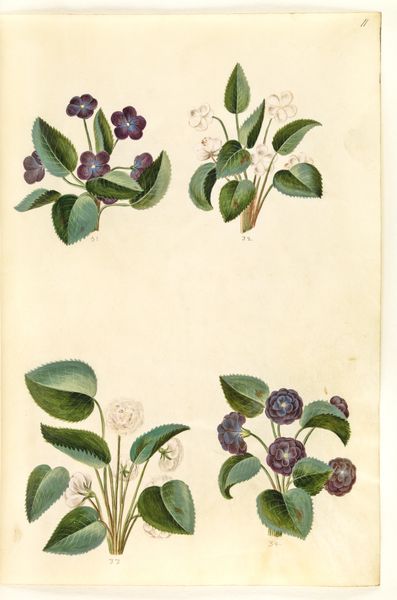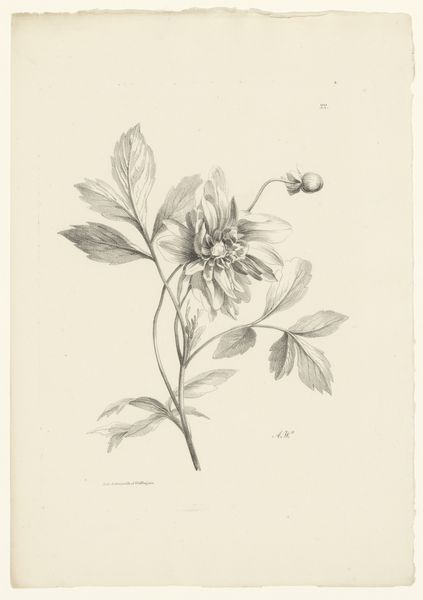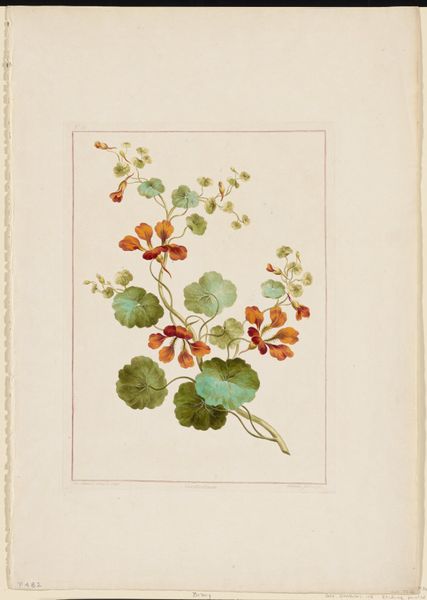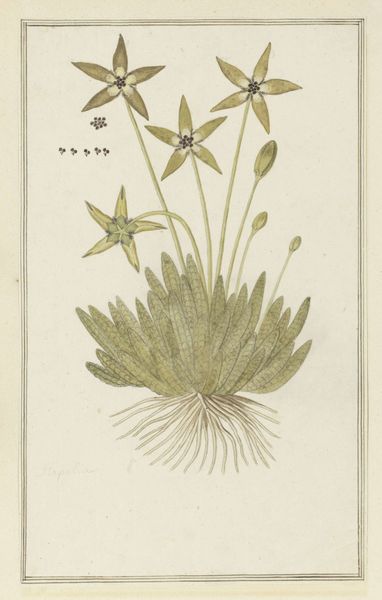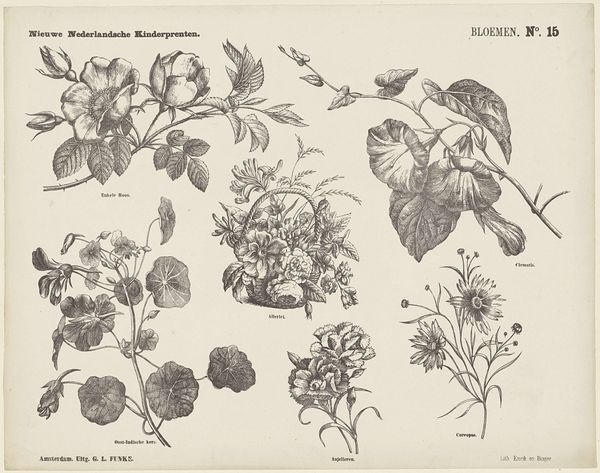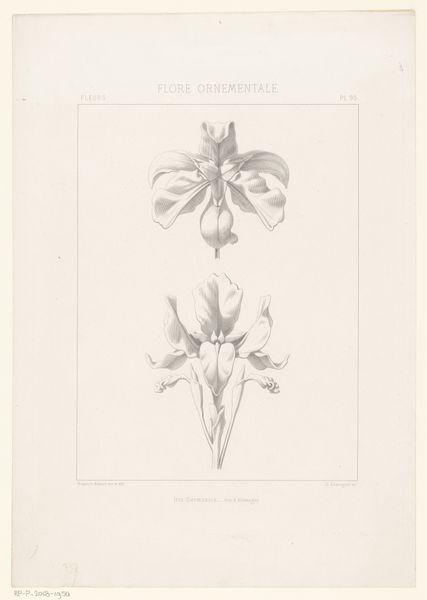
Dimensions: height 345 mm, width 255 mm
Copyright: Rijks Museum: Open Domain
Curator: Before us, we have "Sketches of Anemone and Wood Violet" by Julie de Graag, created sometime between 1887 and 1924. It's a delicate work combining drawing, watercolor, and etching on paper. Editor: My first impression is that it is wonderfully subdued, almost ghostly. The colors are muted, like they have been bleached by the sun, and it makes me want to protect it from further decay. Curator: Absolutely. It’s fascinating how she integrates different processes. Notice the drawn linework defining forms, then offset by the transparency of watercolor washes, and finally how those lines were pressed. Consider how this approach mediates our understanding between reproductive and unique processes. Editor: That is something to ponder! The choice of anemones and violets also speaks volumes, doesn't it? They’re not just pretty flowers, their use, display, and reproduction would have been heavily laden with symbolic weight during the late 19th and early 20th centuries—from notions of remembrance to Victorian flower language. Curator: Precisely, her materials and modes of working echo those values of that period. De Graag uses them but almost drains them of some of that over-exaggerated feeling. Her etching shows skill, but maybe we are seeing the hand more clearly than with standard commercial print, allowing some feeling. Editor: Yes, that hand is exactly what softens and makes her drawing feel more grounded than sentimental. What this does it remind me how constrained the formal training could be at the time and how women artists worked in, around, and against these rules and values to become professional, especially since female labour was often undermined, literally cheapened in this period. Curator: Indeed. The tension between meticulous representation and her distinct, almost faded touch is incredibly evocative. I would go as far as saying it makes one question the established expectations placed on women printmakers. Editor: Overall, this work reveals how social norms and expectations are embodied in materials and techniques. It prompts questions about value, craft, and identity. Curator: Well, that has me wondering what the implications are for thinking about drawing like this going forward. Editor: Agreed, this intimate sketch reveals so much about a woman working at the turn of the century.
Comments
No comments
Be the first to comment and join the conversation on the ultimate creative platform.
